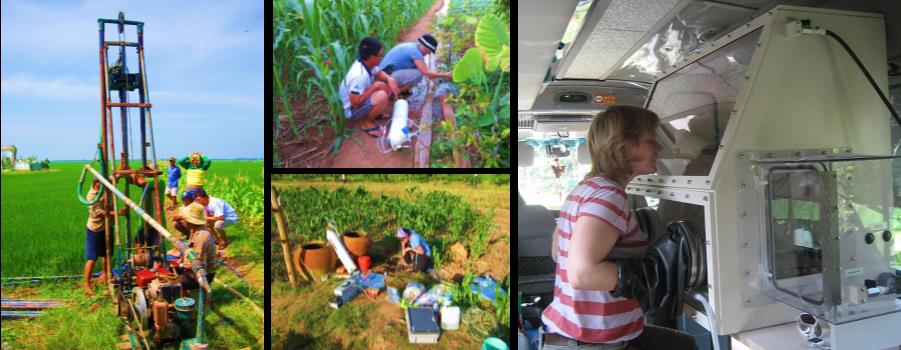| Biovolatilization and biomethylation of arsenic
This Project is a collaboration with Adrien Mestrot reasearch group (Trace Element Speciation and Environmental Chemistry-TrES), at Bern University. The overall objective is to shed light on the bacterial arsenic bio-methylation and bio-volatilization pathways. Arsenic is a ubiquitous and non-threshold carcinogenic element. In this study, we aim to unravel the bacterial biochemical steps leading to volatile arsenicals by combining state-of-the-art analytical speciation techniques with microbiological and molecular biological techniques. Research of the bio-methylation and bio-volatilization of arsenic will allow a better understanding of its biogeochemical cycle and may lead to direct applications for the bioremediation of arsenic polluted sites.
People: Karen Viacava (Ph.D. student) |
|
|
Arsenic sources and sinks in Mekong Delta sediments Arsenic (As) release from sediments into groundwater is a major water quality problem in South and South-East Asia. The currently accepted mechanism of release of arsenic is through biologically driven reductive dissolution of iron oxy(hydr)oxides as a result of organic matter input and subsequent downward transport of the released As through the clay cap to the aquifer. Although this mechanism is thought to be responsible for As release in some deltaic areas, it may not be the dominant mechanism at our study site in the Mekong Delta in Vietnam where the Fe(III) (oxyhydr)oxides are depleted in the reduced sediment below the first several meters. The objective of this research project is to better understand the mechanisms involved in As mobility from its source to the aquifer. This project combines techniques and approaches from microbiology, mineralogy and geochemistry to characterize the groundwater composition as well as the chemistry and the mineralogy of the soil (using electron microscopy, x-ray diffraction and x-ray fluorescence) and As speciation in the soil (using x-ray absorption spectroscopy) to determine the main sources and sinks of As in the sediments.
People: Maria Pilar Asta (post-doc) |

